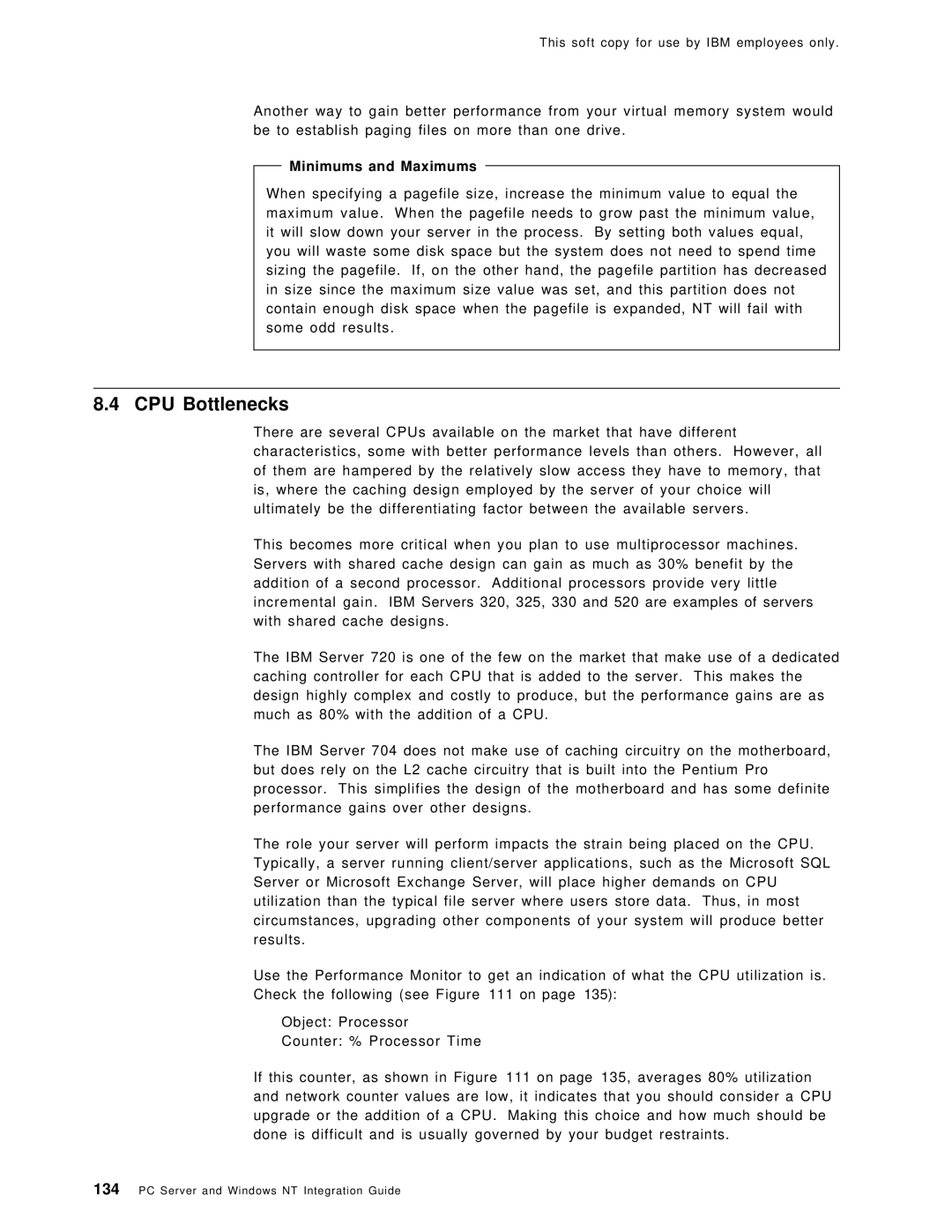
This soft copy for use by IBM employees only.
Another way to gain better performance from your virtual memory system would be to establish paging files on more than one drive.
Minimums and Maximums
When specifying a pagefile size, increase the minimum value to equal the maximum value. When the pagefile needs to grow past the minimum value, it will slow down your server in the process. By setting both values equal, you will waste some disk space but the system does not need to spend time sizing the pagefile. If, on the other hand, the pagefile partition has decreased in size since the maximum size value was set, and this partition does not contain enough disk space when the pagefile is expanded, NT will fail with some odd results.
8.4 CPU Bottlenecks
There are several CPUs available on the market that have different characteristics, some with better performance levels than others. However, all of them are hampered by the relatively slow access they have to memory, that is, where the caching design employed by the server of your choice will ultimately be the differentiating factor between the available servers.
This becomes more critical when you plan to use multiprocessor machines. Servers with shared cache design can gain as much as 30% benefit by the addition of a second processor. Additional processors provide very little incremental gain. IBM Servers 320, 325, 330 and 520 are examples of servers with shared cache designs.
The IBM Server 720 is one of the few on the market that make use of a dedicated caching controller for each CPU that is added to the server. This makes the design highly complex and costly to produce, but the performance gains are as much as 80% with the addition of a CPU.
The IBM Server 704 does not make use of caching circuitry on the motherboard, but does rely on the L2 cache circuitry that is built into the Pentium Pro processor. This simplifies the design of the motherboard and has some definite performance gains over other designs.
The role your server will perform impacts the strain being placed on the CPU. Typically, a server running client/server applications, such as the Microsoft SQL Server or Microsoft Exchange Server, will place higher demands on CPU utilization than the typical file server where users store data. Thus, in most circumstances, upgrading other components of your system will produce better results.
Use the Performance Monitor to get an indication of what the CPU utilization is. Check the following (see Figure 111 on page 135):
Object: Processor
Counter: % Processor Time
If this counter, as shown in Figure 111 on page 135, averages 80% utilization and network counter values are low, it indicates that you should consider a CPU upgrade or the addition of a CPU. Making this choice and how much should be done is difficult and is usually governed by your budget restraints.
134PC Server and Windows NT Integration Guide
